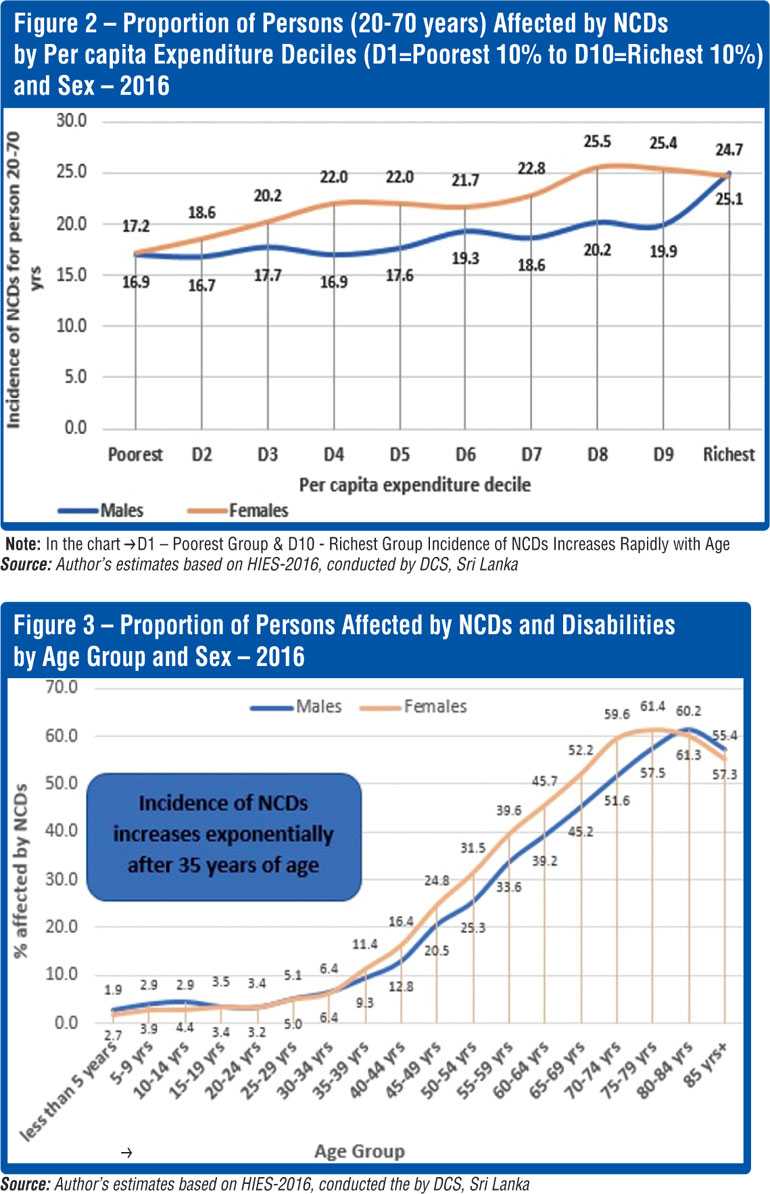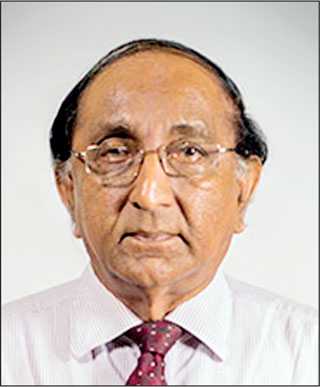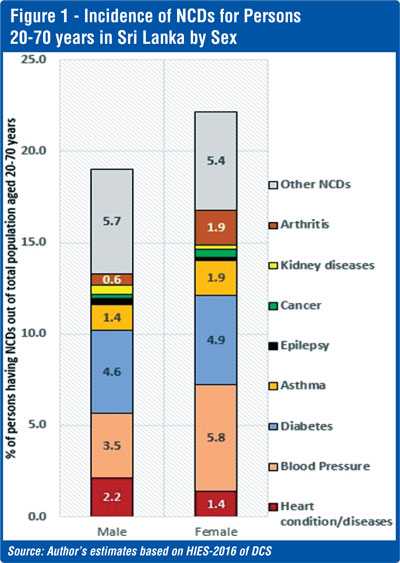Sunday Apr 20, 2025
Sunday Apr 20, 2025
Monday, 14 September 2020 00:30 - - {{hitsCtrl.values.hits}}

By Wimal Nanayakkara
 According to the World Health Organisation (WHO), noncommunicable diseases (NCDs) accounted for 83% of all deaths in Sri Lanka in 2016. Even more concerningly, the WHO states that those with pre-existing NCDs, such as cardiovascular diseases, chronic respiratory diseases, diabetes or cancers, are at a higher risk of becoming severely ill with COVID-19. As such, those affected by NCDs need to take extra care to avoid contracting the COVID-19.
According to the World Health Organisation (WHO), noncommunicable diseases (NCDs) accounted for 83% of all deaths in Sri Lanka in 2016. Even more concerningly, the WHO states that those with pre-existing NCDs, such as cardiovascular diseases, chronic respiratory diseases, diabetes or cancers, are at a higher risk of becoming severely ill with COVID-19. As such, those affected by NCDs need to take extra care to avoid contracting the COVID-19.
In this context, it would be useful to take a closer look at the status of NCDs in Sri Lanka. This blog highlights the incidence of NCDs, by sex, age groups and income levels, based on the Household Income and Expenditure Survey-2016, (HIES-2016), conducted by the Department of Census and Statistics (DCS). It also discusses directions for future research on NCDs and provides recommendations to tackle the NCD challenge.
Status of NCDs in Sri Lanka
HIES-2016 data shows (Figure 1) that the incidence of NCDs is higher for females (22.2%) compared to males (19.0%). However, according to the WHO, males (30-70 years) in Sri Lanka are at a greater risk of dying prematurely due to NCDs (22.0%), compared to females (13.0%). There is thus a mismatch between NCD mortality rates and incidence rates between the sexes.
 The analysis shows that the reported incidences of NCDs are lower among the poor (Figure 2).
The analysis shows that the reported incidences of NCDs are lower among the poor (Figure 2).
These findings indicate that some men and those who are poor may not be aware that they are suffering from NCDs. As such some of these conditions can go unnoticed till it is too late. According to the WHO, this makes treating these diseases more expensive and complicated.
Incidence of NCDs increases rapidly with age
It is also useful to look at the patterns of reported incidences of NCDs for both men and women by age groups. Figure 3 clearly shows that the incidence of NCDs starts increasing gradually after reaching the age of 25 years, with around 5% observed to be suffering from NCDs. After the age of 35 years, there is a sharp increase in the incidence of NCDs, reaching around 60% after 70 years.
Although males show a lower incidence compared to females, the actual incidences could be more for men than for females, as the risk of premature deaths is higher for males. These observations could be useful to health planners, researchers and policymakers.
 Way forward
Way forward
The analysis highlights the gravity of issues related to NCDs in Sri Lanka, although the HIES 2016 does not provide specific reasons for the above findings. As such, comprehensive research by health professionals is essential to help health policy planners to formulate strategies to minimise premature deaths due to NCDs in Sri Lanka.
The researchers should study the following:
(i) Why is the incidence of NCDs low for males, compared to the females, while the risk of premature deaths is higher for males? Are some men not aware that they are affected by NCDs until it is too late, while most women may be aware of their status of health as they get monitored frequently during pregnancy, at childbirth and even after?
(ii) Why do the poor show a lower incidence of NCDs compared to richer groups? Is it because poor people have inadequate access to health facilities and are unable to get their health monitored regularly, while the rich have easy access and resources to do so, or is it simply due to unhealthy consumption patterns and lifestyles of the rich?
(iii) What are the factors influencing the exponential increase in the incidence of NCDs after the age of 35 years, which is a major concern for both males and females?
Effective awareness programs need to be developed and health advice should be given to people well before they reach the vulnerable age group (35 years and above) so that they can take necessary precautions to avoid NCDs.School educational programs could be an effective way to improve awareness on causes, early symptoms, prevention, consequences and control of NCDs.
It is necessary to ensure equitable access to healthcare facilities and medicines, irrespective of where the people live, their socioeconomic status, gender, age, ethnicity, etc.
(Wimal Nanayakkara is a Senior Visiting Fellow of the IPS with research interests in poverty, and is a specialist in sampling. He was previously engaged at the Department of Census and Statistics, where he functioned as the Director General for 12 years. Wimal received his BSc in Mathematics and Physics from the University of Peradeniya and holds a Postgraduate Diploma in Applied Statistics from the University of Reading, UK. (Talk to Wimal – [email protected]).)
Discover Kapruka, the leading online shopping platform in Sri Lanka, where you can conveniently send Gifts and Flowers to your loved ones for any event including Valentine ’s Day. Explore a wide range of popular Shopping Categories on Kapruka, including Toys, Groceries, Electronics, Birthday Cakes, Fruits, Chocolates, Flower Bouquets, Clothing, Watches, Lingerie, Gift Sets and Jewellery. Also if you’re interested in selling with Kapruka, Partner Central by Kapruka is the best solution to start with. Moreover, through Kapruka Global Shop, you can also enjoy the convenience of purchasing products from renowned platforms like Amazon and eBay and have them delivered to Sri Lanka.
Discover Kapruka, the leading online shopping platform in Sri Lanka, where you can conveniently send Gifts and Flowers to your loved ones for any event including Valentine ’s Day. Explore a wide range of popular Shopping Categories on Kapruka, including Toys, Groceries, Electronics, Birthday Cakes, Fruits, Chocolates, Flower Bouquets, Clothing, Watches, Lingerie, Gift Sets and Jewellery. Also if you’re interested in selling with Kapruka, Partner Central by Kapruka is the best solution to start with. Moreover, through Kapruka Global Shop, you can also enjoy the convenience of purchasing products from renowned platforms like Amazon and eBay and have them delivered to Sri Lanka.